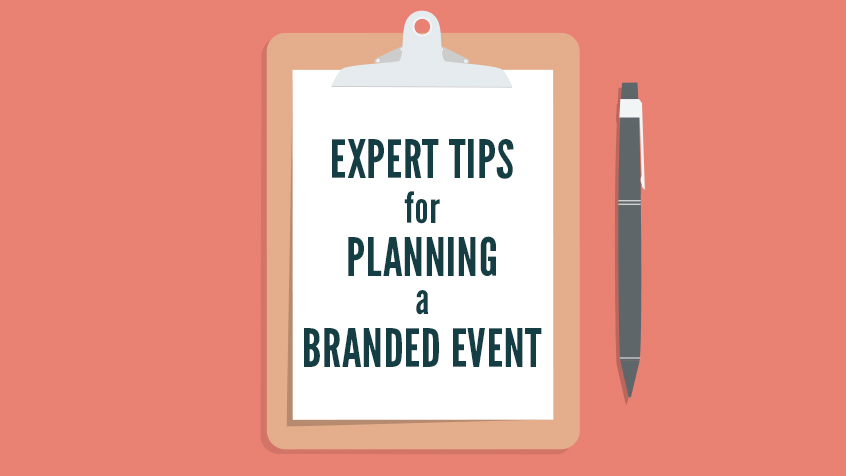Trade shows provide an opportunity for businesses to network, build brand awareness, generate leads, and gather market intelligence. Trade shows are typically held in large exhibition centers or convention halls and are attended by industry professionals, buyers, and journalists. If you’re planning to showcase a product at a trade show but have never attended one before or don’t know where to start, this beginners’ guide will explain what trade show marketing involves, how to plan it well, and how it fits into an overall marketing strategy.
What Does Trade Show Marketing Involve?
Trade show marketing is a strategy for your company to target key decision-makers and influencers at industry-specific conferences and congresses who are all gathered together in one location. It is a B2B context where your company can expand its footprint and increase its visibility from a competitive perspective. The goal is to provide the right environment to target those key influencers and maintain influence within your category. Trade show marketing is important for promoting messaging, brand awareness, and any news related to your particular product or service. It is a way to drive foot traffic to the booth and increase visibility through the key days of the conference. The value of trade show marketing is to think about what is beneficial to the audience in the physical space and to create a surround-sound presence with branding or corporate communications.

Effective Trade Show Strategies
It is very important to have a presence outside of the trade show convention center to attract people to your company’s booth. Early planning is critical, and a rolling calendar of key conferences should be developed at least 12 months in advance. It is also critical to understand your target audience and their behavior, create a clear goal for the conference, and determine the most effective placement for advertising. You want to engage your audience by creating touchpoints and visibility around the convention center and nearby hotels. This includes billboards, mall scapes, street furniture, and transit shelters that are on key intersections near and around the areas where the audience will be.

Roving media that can follow the audience as they move from the convention center to their hotels and the nightlife are also advantageous. Examples of roving media include mobile billboards, wrapped municipal buses, digital taxi tops, ride-share ads, and pedicabs. You want to target the specific locations around the city where you know the attendees will be going, like nearby hotels, restaurants, and bars.
To build a successful trade show marketing campaign, it helps to follow a three-step approach.
Step 1: Establish a Framework
The first step is to establish the framework for the campaign by defining the objective, audience, message, and outcome. This involves identifying:
- What the campaign is designed to achieve
- How to communicate the messaging effectively
- What the desired outcomes are
It’s also important to determine what metrics you’ll be using to measure the success of your trade show.
Step 2: Establish an Integrated Marketing Approach
The second step is to build an integrated marketing approach that goes beyond the booth and includes other channels, such as digital marketing, email campaigns, social media, and other location-based marketing tactics. The goal is to increase the effectiveness of the campaign by creating a memorable brand experience off of the trade show floor and maximizing the potential touch points with the audience.

This includes locations like airport ads in the convention city and places just outside or very near the convention center, as well as locations like transit shelters and buses that travel along the routes leading to the convention center.
Step 3: Align with the Trade Show Organization
The third step is to align with the trade show organization rules and restrictions and become familiar with the show prospectus. There may be some limits to what can be done, and you should weigh the ramifications of asking for permission before, rather than begging for forgiveness later.
Overall, a successful trade show marketing campaign integrates and aligns all marketing communications channels, and requires a deeper approach that takes time to ask the right questions, understand the attendee experience, and identify potential touch points.
How to Get Started Planning for a Trade Show
Set your goals: Determine what you want to achieve by exhibiting at the trade show. Are you looking to generate leads, increase brand awareness, or showcase new products? Having clear goals will help you make decisions about booth design, marketing materials, and staffing. After goals have been set, it is important to establish a process for measurement: How will progress be tracked and evaluated? Who is responsible for monitoring, and how will this information be reported?

Choose the right trade show: Research and choose a trade show that aligns with your goals and target audience. Consider factors such as location, timing, size, and cost. Many companies focus only on primary trade shows. Still, there is a lot of merit to attending secondary trade shows as well, which are smaller with fewer attendees but can generate a lot of excitement about, and traction for, your product. Read more about the benefits of second-tier trade shows here.
Plan your budget: Determine how much you can afford to spend on the trade show. Your budget should include booth rental, marketing materials, travel, and lodging expenses.
Design your booth: Work with a designer to create an eye-catching and engaging booth that represents your brand and communicates your message. Consider factors such as lighting, signage, and product displays. Read more about designing an awesome trade show booth here.
How Does Trade Show Marketing Fit into an Overall Marketing Strategy?
Trade show marketing can be an important component of an overall marketing strategy for a number of reasons:
- Trade shows provide an opportunity to meet potential customers face-to-face and generate leads that can be followed up on after the event. The advantage of a trade show is that the target audience is gathered together in one place, rather than being spread out across the country, or even the world.
- Exhibiting at trade shows can help to build brand awareness and increase visibility within a particular industry. By showcasing products or services, you can position your company as an industry leader and build credibility with potential customers.

- You can generate excitement and buzz around the launch of a specific product.
- Trade shows provide an opportunity to network with other businesses within the same industry, which can lead to potential partnerships, collaborations, or other business opportunities.
- Trade shows can be a valuable source of market research, allowing you to learn about new industry trends, products, and services.
How Should My Company Follow Up After a Trade Show?
After your company has a trade show, you should have a debrief to analyze what went well and what you can improve on for next year, and that info should inform your strategy from that moment on going into future trade shows. Then, start researching the media landscape in the next trade show’s city so you can get started on messaging and other key strategies right away.
Additionally, it is important not to let those new contacts slip through the cracks. Ensure that leads are entered into your CRM system, assigned to an account executive, and a follow-up cadence of calls and emails is established.
Contact EMC Outdoor
Working on an out-of-home campaign or gearing up for a trade show? Contact us at EMC Outdoor—we can provide valuable advice and assistance with whatever out-of-home marketing needs you have.





![Out of Home and the Casual Consumer [Infographic]](https://www.emcoutdoor.com/blog/wp-content/uploads/2018/05/HEADER-100.jpg)